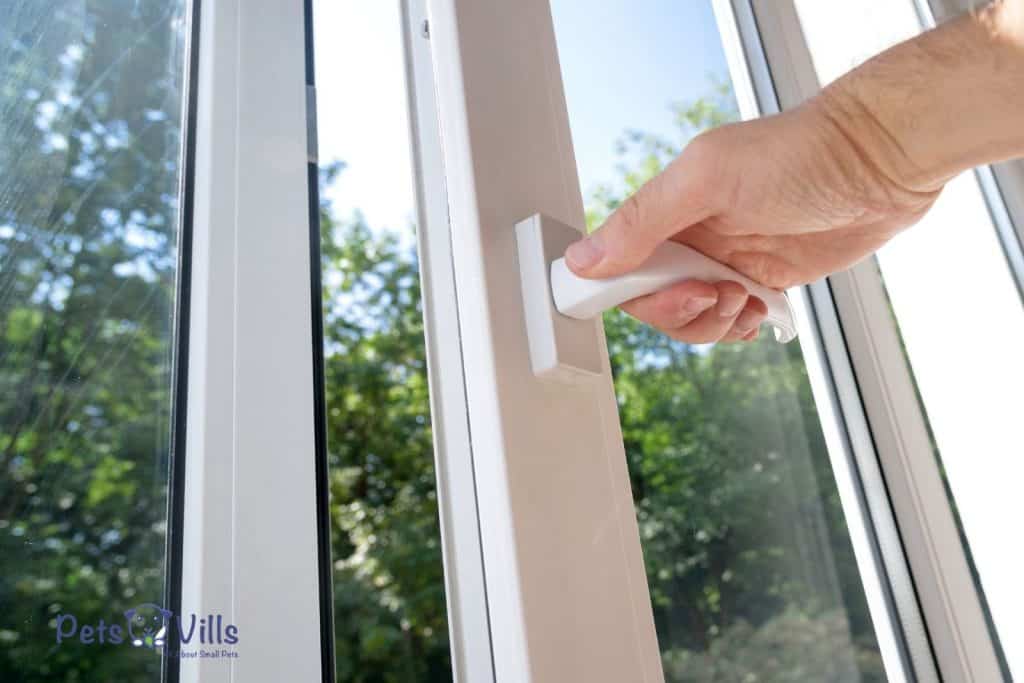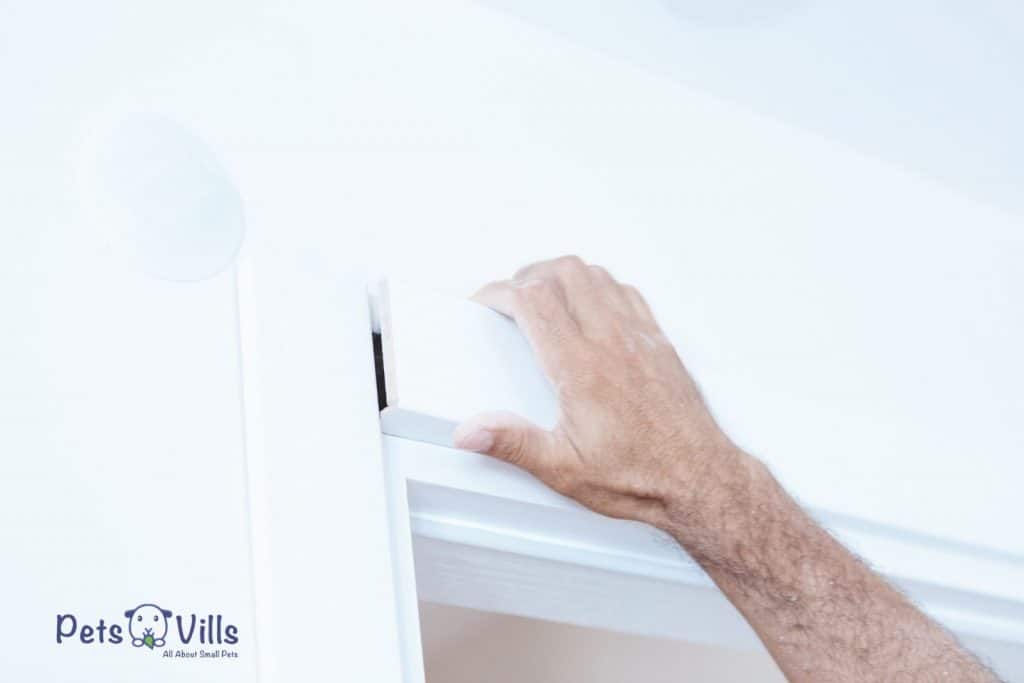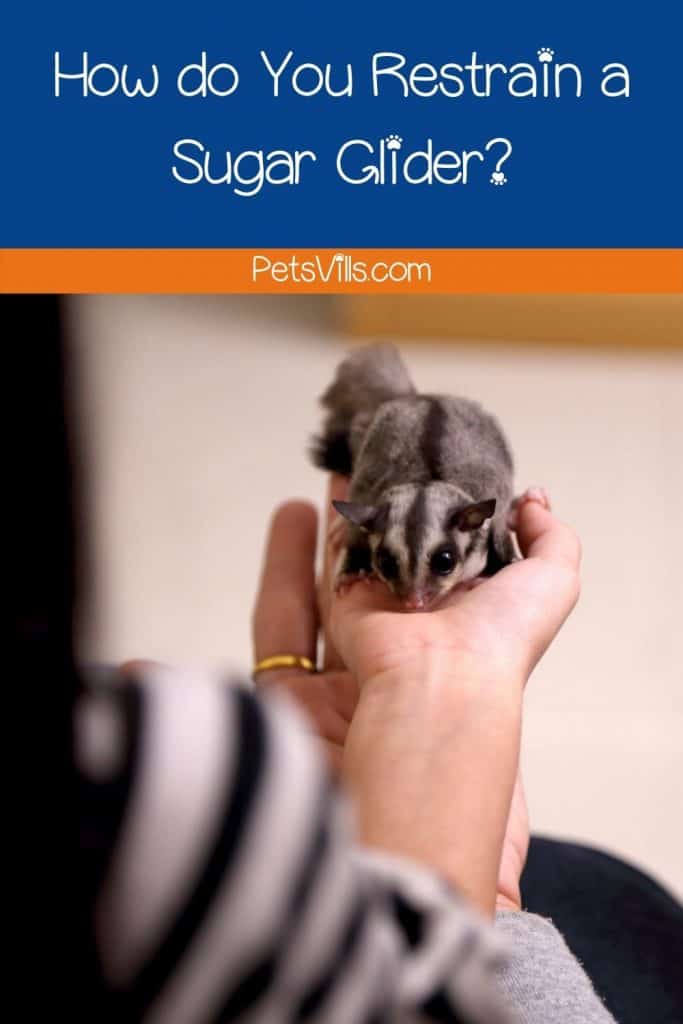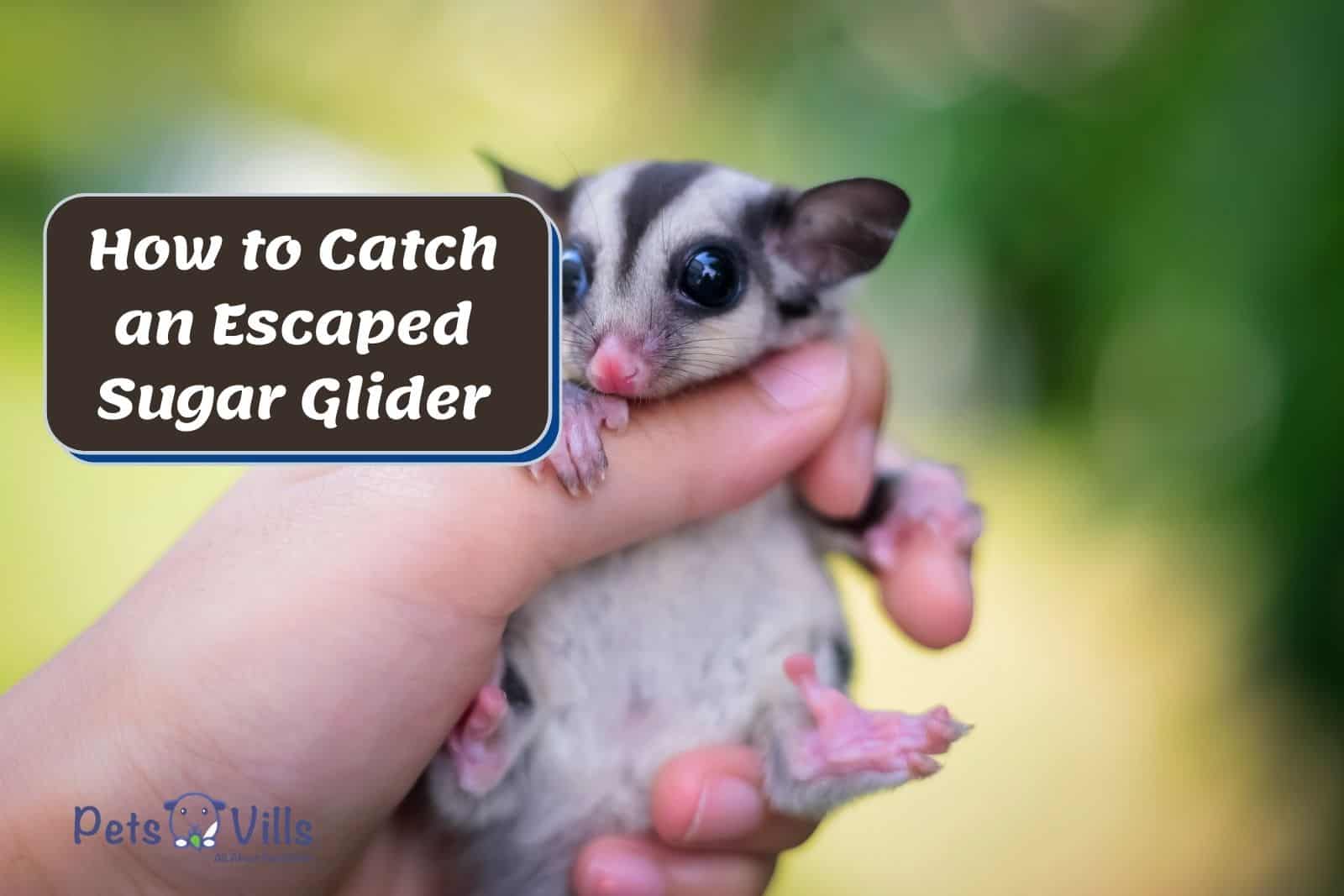A sugar glider keeps escaping cage is one of the problems that I frequently encounter when talking to parents of these adorable pets.
One of our readers let us know about this very problem that they were having – “I had the tiny, pocket-sized companion with the ability to keep escaping its cage after wriggling through between the bars, and it drove me up a wall!”
In fact, a vet at the VCA hospital exclaimed “Sugar gliders are escape artists and are easily able to squeeze through the tiniest openings and cracks” [1]
I had to deal with this problem! Do you know how I solved it? Keep reading my guide to find out.
RELATED ARTICLE: Do Sugar Gliders Like Cages?
Table of Contents
How to Find a Sugar Glider That Keeps Escaping the Cage and Bringing it Back?
As panic begins to set in after you have thoroughly searched the sugar glider cage, or pocket, and still can’t find your sugar glider anywhere, even on your body, it’s time to start trying some proven ways to entice it back.
So, let’s get started, especially if you are experiencing this problem right now!
11 Ways to Safely Search For Your Glider
#1 If you have more sugar gliders in the cage, secure it before finding that lost one so that you don’t lose more of them.

- With its small, fluffy body, a glider can wriggle through any sort of gap that would lead outside the house. Close all doors and windows tightly. Double-check to be sure.
#3 If there are pets in the house other than the gliders, keep them in one place so that they do not go around scaring your furry little friend is on the loose.
#4 Ensure every drainage or opened hole, even the toilet is closed or covered. Keep your house vents closed, and even close the fireplace.
#5 Heat will seriously injure or even be fatal for your beloved glider. Make sure every heat-emitting object in your home is turned off.
#6 Make sure things the glider can bite into that are bad for its health (e.g soup, candles) are put away somewhere safe and where you have already checked for your glider.
#7 Step carefully, wherever you go. Don’t lean onto pillows or step onto doormats without checking underneath.
#8 If you own reclining chairs or sofas and there is a possibility the glider might have been hidden there, do not fold it or the glider will get squished inside it.
#9 Wear your shoes after you have checked your glider is not in there.

#10 The top of the door and down the hinges are some of the favorite hiding spots for sugar gliders, so check there first before closing it.
#11 Let everyone else in your house know your gliders are missing, and have them follow these instructions.
3 Ways to Use Tricks and Treats To Get Your Glider to Come Back
- Darken the house and silence as much noise as possible. The ruffling and tittering of the glider are more prominent as they are nocturnal animals, which can help you locate your little buddy. This method has proved effective by several glider owners that I know.
- Place treats in every single room and inside their pouches. Come back after a while to see if they were rummaged through. Always ensure the treats are safe for exotic nutrition.
- Leave the cages alone and open (make sure if you have other gliders that they are secure). Most probably, like all pets, the glider will come back home after its little adventure.
5 Searching Protocols To Find Your Pet Glider
#1 Don’t leave any stone unturned.
Search everywhere, even your open laptop bag, to find the little guy. Every inch of the house has to be thoroughly searched, and don’t give up.
#2 Don’t miss the sound of their nails scratching.
It is better to search in utter silence. Wear socks to muffle your footsteps if you have to.
#3 Bring a towel and some treats.
If in the early stages of glider parenting, take a towel with you and a few treats so that, once you find it, it comes with you to the cage easily.
#4 Search at night.

Sugar gliders are nocturnal beings. They are also social animals. When night falls and they are more likely to make noises and look for companions. So, search then.
#5 Don’t lose hope.
Animals usually don’t run towards what they perceive as dangerous surroundings and stay close to home but hidden. Experienced glider parents I’ve meet always tell me your glider is mostly in the house so keep looking.
ALSO READ: How to Get Sugar Glider Out of Cage
What to Do to Avoid When a Glider Keeps Escaping its Cage?
Taking care of a sugar glider, especially in the early stages of ownership, is quite a feat. Patience and consistency are key to building a good relationship for sugar glider owners.
Here are a few simple things you can do to prevent another episode of frantic searching and anxiety-induced sweat after losing your little companion.
Extend Bonding Hours With Your Glider – 4 Ways
- Let your small friend know you are not a stranger, but a caretaker, a mom. Talk to it, befriend it. Interact with it so it knows you are no threat.
- Have it know your smell. This you can do by cupping it in your palms.
- The cage for sugar gliders has to be spacious. If it’s small, the glider won’t be happy stuck in there all the time. You also need a secure cage that does not have wide bar spacing. 0.5-inch wire spacing is a good size.
- Don’t scare them. Look away and step back if they show even a small sign of being afraid of you. Take your time.
Use a Good Quality Suitable Cage, Care & Security Tips
Make sure the entire cage is suitable and of good quality. Avoid cheap sugar glider cages. Biting down at the cage to escape is something you want to avoid.
Tight bar spacing is important on wire cages, to prevent this, and ensure they can’t fit through.
Goose Creek Veterinary clinic recommends spacing between bars is a maximum of 1″ by 1/2″ wide. [3] A well-designed cage will have solid construction, be secure, and filled with plenty of stimulating sugar glider cage accessories.
It will have ample space for your glider to move around, contain a water bottle, and have a nesting corner.
This video will help you learn how to set up a cage safe environment.
Food is also important to encourage your glider to stay where you want. Feed it regularly, with a nice, balanced diet.
Sugar gliders love sweet treats but are omnivores who need protein and added calcium according to North Madison Animal Vets. [2].
Always do security checks when after you’ve spent time with your glider. Once inside the cage or pocket, triple-check if the cage is fully closed (securely) or the pouch is zipped up properly.
You don’t want to be kicking yourself later if you miss this crucial point.
FAQs
How do you keep a sugar glider in the cage?

To keep a sugar glider in the cage be his friend and don’t scare it. Feed it well, make it comfortable, and provide an open and clean space for it to live. They are social animals, so a second glider can help.
Do sugar gliders need bedding in their nest box?
Bedding is not a necessity in a sugar glider nesting box, but you can do so for it to have something to cuddle with.
How to best set up a glider cage?
The best way to set up a glider cage is to use suitable accessories inside the cage so that the glider is not bored by the wide vertical space.
Here is a vet-approved video to teach you how to have a safe, suitable cage.
Can sugar gliders open cage doors?
Sugar gliders can open cage doors if they are not secured well. Try tieing something around the bars that won’t hurt your glider that is easy to take on and off, such as a strip of fleece. Look for a cage with a good locking mechanism.
Conclusion
A sugar glider keeps escaping the cage and you feel like it’s the “worst moment of my life” and “like I’m trying to deal with that “naughty” kid that every teacher dreads having.”
Hopefully, my tips and tricks will help you have more fantastic moments with your sugar glider instead of the ones I quoted above that a reader experienced.
Get into good habits of following them and you will have a great time parenting your glider.

Have you found your methods of catching an escaped sugar glider? Let us know in the comments down below!
Resources
- 1. “Sugar Gliders – Owning.” Vca_corporate, 2009, vcahospitals.com/know-your-pet/sugar-gliders-owning.
- 2. “Caring for a Sugar Glider.” Www.northmadisonanimalvet.com, www.northmadisonanimalvet.com/blog/274720-caring-for-a-sugar-glider. Accessed 26 Mar. 2022.
- 3. “The World of Sugar Gliders | Veterinarian in Goose Creek, SC | Goose Creek Veterinary Clinic.” Gcvetclinic.com, gcvetclinic.com/sugar-glider. Accessed 26 Mar. 2022.
Alina Hartley is a small-town girl with a ginormous love of bearded dragons. It all started with Winchester, a baby bearded who was abandoned at the shelter by his former owners because of a birth defect that caused one front leg to be shorter than the other. Alina originally went to the shelter looking for a guinea pig, but one look at Winchester and it was love at first sight. From that day on, Alina has dedicated her life to learning everything she can about bearded dragons. She loves helping new beardie parents start their incredible journey with these magnificent reptiles.
Follow her on:
LINKEDIN
TWITTER.
Read her latest articles HERE
Learn more about her HERE.




![Cute Sugar Glider Drinking From The Bottle [Must-Watch Video]](https://petsvills.com/wp-content/uploads/2022/09/Cute-Sugar-Glider-Drinking-From-The-Bottle-Must-Watch-Video-211x150.jpg)
